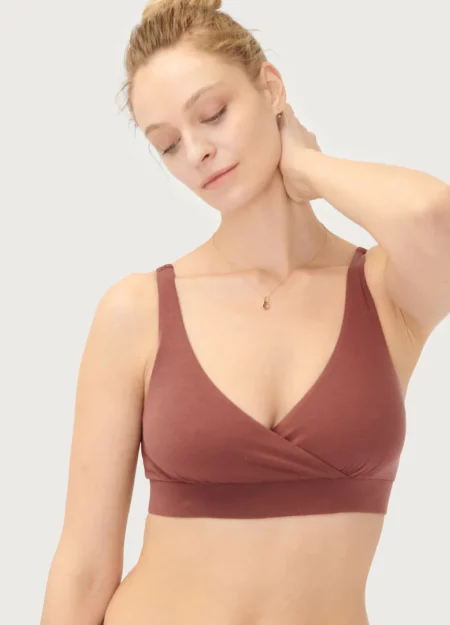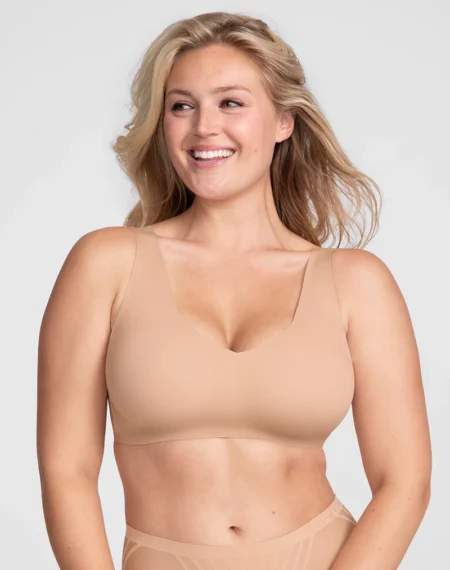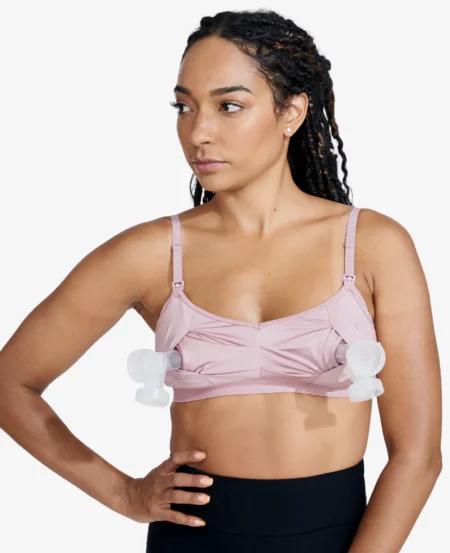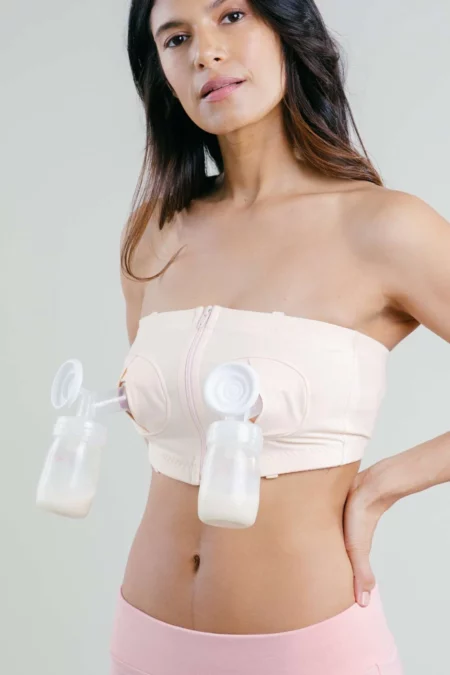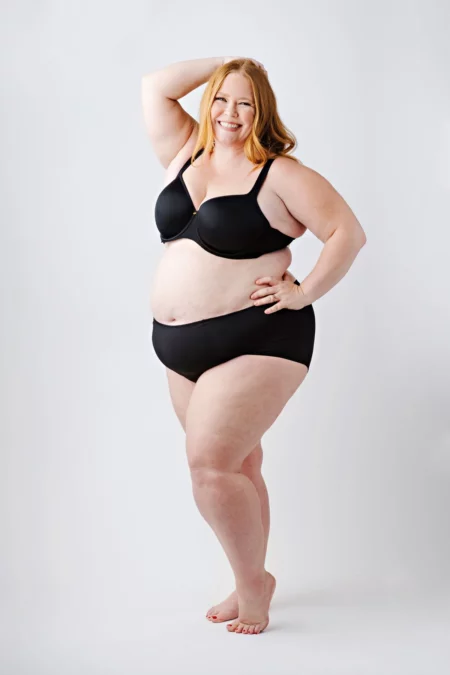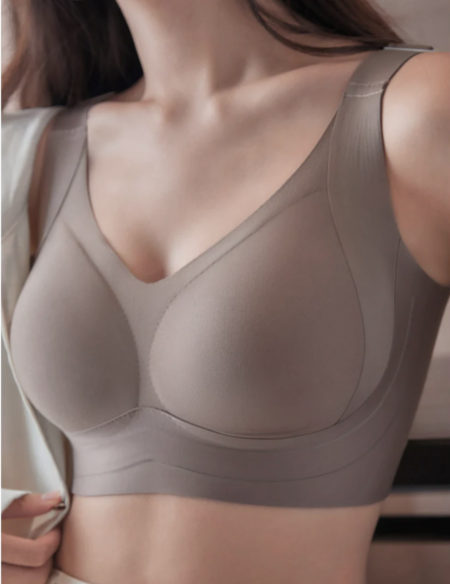The 8 best maternity bras, according to an expert
Did you know that your breasts are 35% heavier when in the end stages of pregnancy or nursing because of engorged milk ducts? Even if you opt not to nurse, you’ll still have heavier, sore, and more tender breasts. That can make everyday activities and even sleeping uncomfortable or difficult throughout those nine months—and beyond.
The answer to your prego-prayers? A sturdy supply of maternity bras for each stage of pregnancy. But first, here’s what to look for.
Finding the perfect maternity bra fit
Let’s start with pregnancy. Your baby is growing, and so are you! Because our breasts are made up of glands, tissue, and ligaments, they can fluctuate in size for hormonal reasons and weight loss or gain. Throughout pregnancy, ongoing hormonal fluctuations and possible rapid weight gain can result in changing bra needs. As a result, you might find yourself needing various bra sizes at different times during the nine months.
Add your milk “coming in,” and it gets even trickier. As The Bra Expert and bestselling author of The Bra Book, I hear questions from women regularly, and how to figure out what bras to wear while your body is undergoing so many changes is #1 on the list.
As a rule of thumb, I recommend adding one cup and one band size to your pre-pregnancy band size. So, if you usually wear a 32C, try a 34D instead.
For many people, changes in breast size usually don’t start until after the 3rd month of pregnancy.
Of course this is going to be different for every woman. Your breasts can change anywhere from one to four cup sizes as you hit the second and third trimesters. My band stayed the same with my first pregnancy, but I went up two cup sizes. With my second pregnancy, my size didn’t change at all — however, I did opt to forego my usual underwire foam cup “t-shirt bra” style for a wire-free soft cup style instead.
Either way, it’s essential to understand how to measure yourself, and you can do so throughout your pregnancy or as you feel your breasts changing. Once you start bra shopping, be sure it’s comfortable on the tightest hook, so you give yourself some room to grow. Overall fit is critical when looking for a bra that will support and provide comfort when pregnant and breastfeeding.
Here are some signs your maternity bra is fitting properly:
- A well-fitting band should lay flat across your back, horizontally, and parallel to the floor. It should not be riding up in the back or flipping up in the front.
- When it comes to cup size, the breasts should fill the cup without gaping or spilling over, and when wearing an underwire, the wires or boning shouldn’t poke or dig in.
- Your straps shouldn’t be digging in or sliding down.
How to measure for your maternity bra in six steps
Steps 1 – 3:
 Wrap the tape measure snugly around your rib cage, just under the bust. If you are wearing an underwire bra, tuck the tape inside the the wire.
Wrap the tape measure snugly around your rib cage, just under the bust. If you are wearing an underwire bra, tuck the tape inside the the wire.
 Make sure the tape measure is flat against the body and parallel to the floor all the way around.
Make sure the tape measure is flat against the body and parallel to the floor all the way around.
 Exhale and take your measurement, ensuring your fingers are not under the tape measure.
Exhale and take your measurement, ensuring your fingers are not under the tape measure.
Steps 3-6:
 Wrap the measuring tape loosely around the widest part of your bust.
Wrap the measuring tape loosely around the widest part of your bust.
 Make sure the tape measure is flat against you and parallel to the floor all the way around.
Make sure the tape measure is flat against you and parallel to the floor all the way around.
 Inhale and take your measurement, ensuring your fingers are not under the tape measure.
Inhale and take your measurement, ensuring your fingers are not under the tape measure.
Why is fit so important when it comes to maternity bras?
Now that you’ve got the measuring down pat let’s talk about why a properly fitting bra is so important during pregnancy and nursing! A too-tight bra can cause a severe and painful health condition known as mastitis. It’s when milk ducts get clogged up and become inflamed and infected.
While its root cause is typically not expressing milk fully or fast enough, having a too-tight bra pushing against milk ducts can also be a culprit! It can also restrict milk flow and supply, which not only clogs ducts but prevents your baby from getting what he/she needs!
You can also face skin irritations, rashes, and fungal infections from improperly fitting bras rubbing and chafing the sensitive skin on and around the breasts. No bueno!
Your bra should fit comfortably on the tightest setting, giving you plenty of room to adjust the fit as you grow.
The eight best maternity bras you’ll need
Understanding the different types of bras you might need during pregnancy and beyond is essential. Here’s a guide to the styles I’d recommend and when to shop for them:
First trimester maternity bras
Look for one that’s seamless, wire-free has removable pads for modesty, and very soft, stretchy fabric that grows with you.
Soft, breathable, non-irritating fabric is most important to avoid “icky” conditions like skin irritations and fungal infections! Also, know that you’ll be wearing this bra most often, so I recommend purchasing at least three: one to wash, one to wear, and one to spare!
Second trimester maternity bras
Sleep is so important to new moms! Whether or not you sleep in a bra is a personal preference. I know many women who never did but then opt to during pregnancy and nursing. Especially if you’re lactating and milk is leaking out!
Get yourself a sleep bra that provides an excellent barrier. I recommend a soft cotton style free of wires, clasps, or clips that offer light support during pregnancy and nursing. With sore and tender breasts, a sleep bra provides comfort to help you get your zzz’s (because we know we won’t get much sleep once the baby is born!)
3rd trimester-early postpartum bras
For moms on the go, now is the time to start looking for a hands-free pumping bra!
Most women prefer one in which the outer fabric layer clips down to access the inner layer with a slit opening to insert the pump flange and hold it in place. The inner layer also keeps the breast covered, offering discretion for mom if she finds herself needing to pump in a not-so-private environment!!
This bra allows the mom to nurse the baby on one side while pumping the other if needed. It’s also still soft and stretchy to accommodate changing breasts, so you can feel confident purchasing it while you know your size is still shifting. It’s genuinely the multi-tasking bra you’ll need!
4-6 weeks postpartum bras
For women who prefer a more structured bra, you can choose a full-coverage foam cup option with an underwire for added lift and support for all-day wear at this stage in the game.
I recommend this option 4-6+ weeks postpartum when the blood flow and milk production have stabilized (and, of course, after you’ve measured yourself again!). Underwires are a personal preference, but avoiding underwires during the first three months of pregnancy and the beginning of the 4th trimester is suggested since the breasts are changing so rapidly. This is an excellent wear-to-work option, and the molded, full-coverage cups also provide modesty.
Final note
Remember to give yourself grace with your growing body. No two pregnancies are alike, and your bra needs could fluctuate daily! Just do your best, mama; that’s all you can do!




